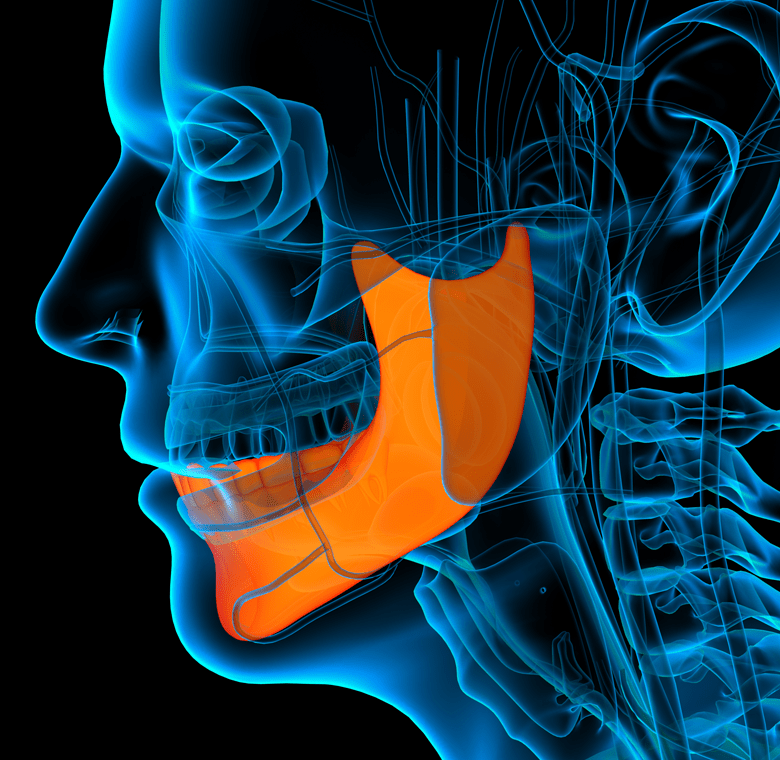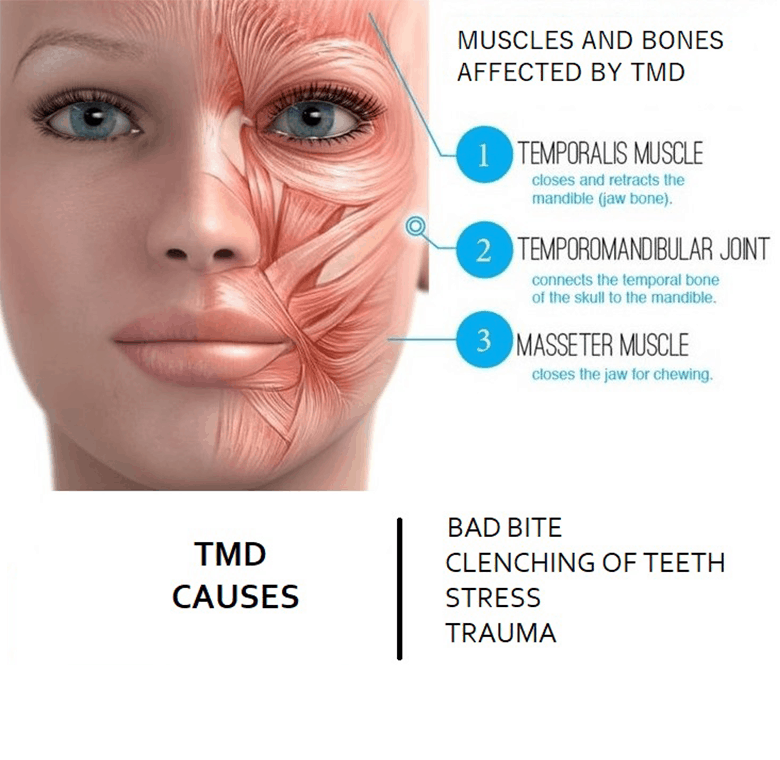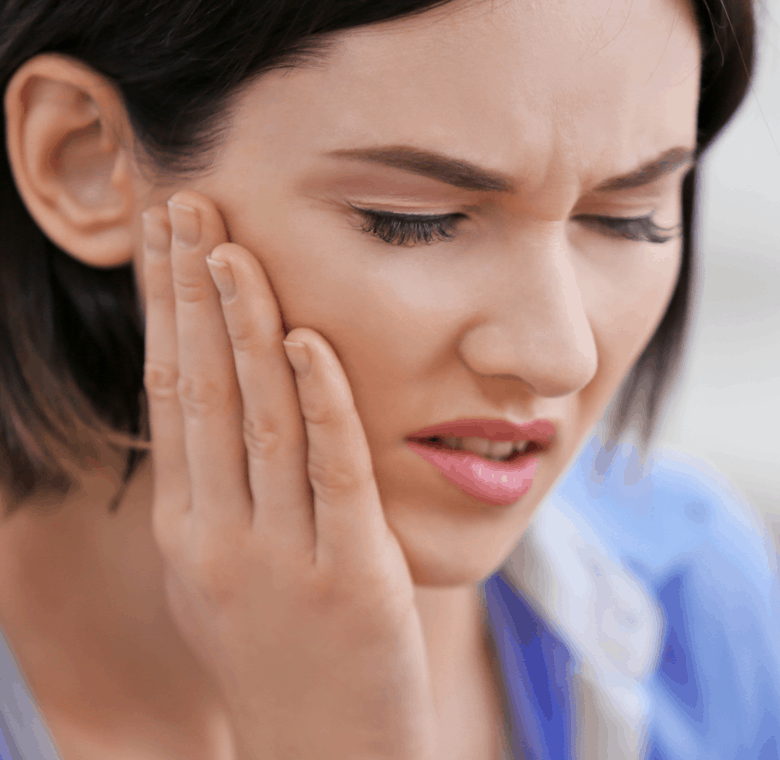What Are Temporomandibular Disorders (TMDs)?
Temporomandibular disorders (TMD) is associated with problems of jaw movement and pain in and around the jaw joints.
The jaw joints, or temporomandibular (TM) joints, connect the lower jawbone (mandible) to the skull. The TM joints are used to open and close for various jaw movements involving talking, chewing, swallowing, yawning etc. Generally these joints function in a complex way that involves physiologic or normal movement of a soft disc called articular disc over the condyles of the mandible. If this movement of the disc is affected or compromised due to bad arrangements of teeth, abnormal teeth wear, trauma etc, there is TMD. Typically TMD involves not only the disc but also the associated jaw muscles. These jaw joint and muscle problems are complex. The correct diagnosis is important to carry out correct treatment to relieve the TMD.


What Are The Symptoms?
Temporomandibular disorders (TMD) can affect the jaw and jaw joint as well as muscles in the face, shoulder, head, and neck. Common symptoms include joint pain, muscle pain, headaches, joint sounds, trouble with fully opening the mouth, and jaw locking.
In most cases, symptoms of TMD are mild and don’t last long. They tend to come and go without getting worse and usually go away without any treatment.
Some people who have TMD develop long-lasting (chronic) symptoms. The pain and discomfort may go on worsening without correct diagnosis and treatment. The pain and difficulty moving the jaw may affect normal activities like talking, eating, and swallowing. This may affect a person’s overall sense of well-being.
What Causes Temporomandibular Disorders?
The most common cause of TMD symptoms is tension in jaw muscles due to shifting of jaws, often triggered by improper teeth contacts, a dental treatment like a filling / crown / implant etc. Also stress can trigger clenching or grinding your teeth which in turn can put strain on jaw muscles. Jaw muscles in turn cause abnormal jaw movements leading to strain on TMJ, disc displacements or pathologic wear of teeth or bony part of condyles leading to a cycle of muscle spasm, tissue damage, pain, sore muscles, and more spasm.

TMD can start when there is

How Is A Temporomandibular Disorder Diagnosed?
TMD is most often diagnosed by the clinical symptoms like
- Joint clicking or noises, pain around the joints at rest or in function.
- Asymmetric / restricted jaw movements, jaw shifting on opening and closing
- Pain in jaw muscles on palpation, headaches, watery eyes, pain behind eyes, radiating pain to back and shoulders, neck stiffness etc.
- Evidence of pathologic teeth wear, improper / traumatic occlusion.
- In some cases, X-ray, CT scan, or MRIis also used to check for bone or soft tissue problems related to symptoms of TMD.
How Is It Treated?
TMD symptoms sometimes go away without treatment if the cause is limited to sudden mild trauma. Simple home treatment like resting the joints, eating soft food, avoiding extreme jaw movements and anti-inflammatory / muscle relaxing drugs can often relieve mild jaw pain. Sometimes getting physiotherapy and learning ways to reduce stress also may help to reduce pain associated with TM joint.
Other causes usually requires expert diagnosis and treatments with customised TMJ splints to deprogramme and relax mandibular musculature and re-establish TM joint health. This is usually followed by corrective treatment to settle functional occlusion. Depending on the severity of the discrepancy between the post splint occlusion and correct functional occlusion, one of the following treatment is done to achieve final occlusal relationship


TMJ Splints are custom made hard acrylic / plastic appliances which are fabricated after carefully replicating a person’s TMJ functioning by facebow records and bite registration and mounting on a semi or fully adjustable gnathologic articulator. The splints are made to allow only natural movement of the jaws as per ideal functional occlusion. These splints are to be worn all the time even while eating food.
As the jaw muscles relax as they are not strained by pathologic occlusion anymore, the strain on TMJ also corrected and healthy TM Joint functioning is re-established. The splints are to be adjusted at regular intervals to allow sequential correction of the TMD. Once the jaw muscles are fully relaxed and joints start functioning normally, the pain and discomfort associated with TMD disappears.
Splints are discontinued once complete correction of occlusion is done.
Surgical Treatment for TMD
Surgical treatment is sparingly recommended in severe cases which involve advanced bone disease, disc perforations or chronic joint subluxation. In most cases conservative treatments with splints followed by corrective occlusal treatment helps. Surgical results are very unpredictable and sometimes may lead to worsening of the existing problem.

